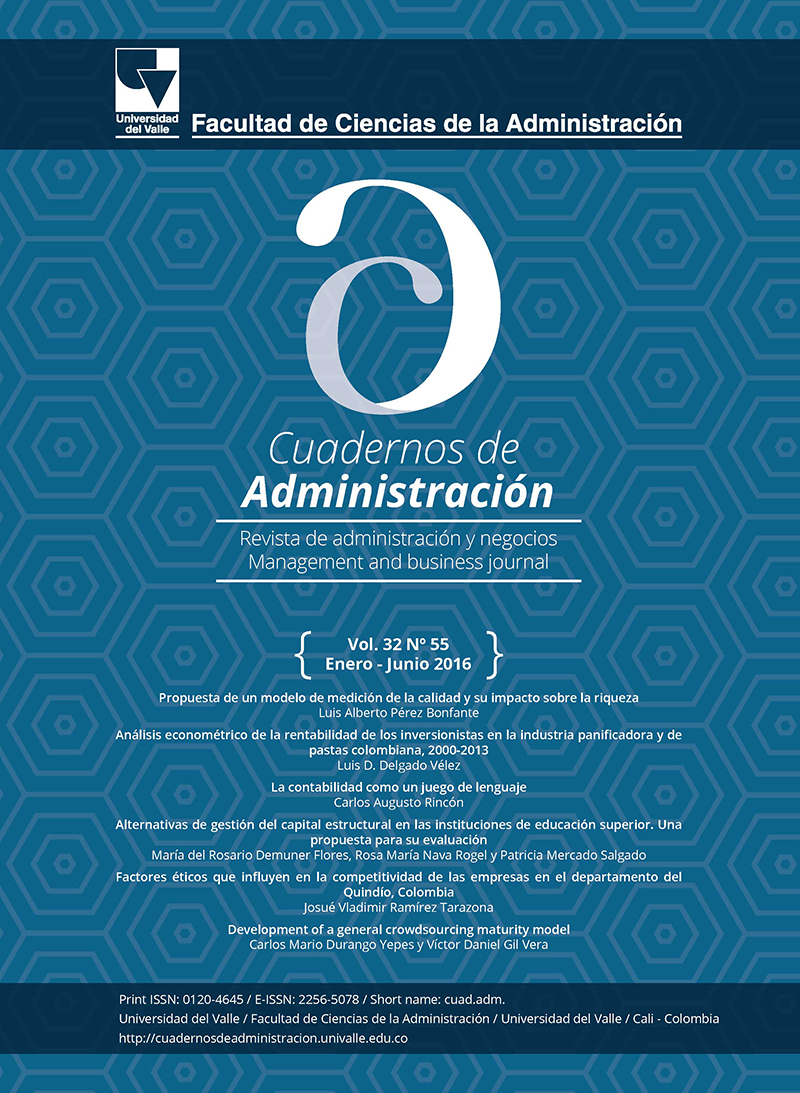Alternatives of structural capital management in higher education institutions. A proposal for their evaluation
Keywords:
structural capital, evaluation, dimensions, indicators, higher education institutionsMain Article Content
Structural capital is the knowledge owned by an institution that arises in the extent that it is owned by its members, made explicit, codified and formally systematized; therefore the goal of this work is to identify the dimensions and indicators that glimpse the guideline of structural capital management in order to make a proposal for its evaluation that can be used to improve performance in higher education institutions. A review of 25 theoretical and empirical documents provides dimensions and overlapping and redundant indicators in: 1) processes: internal routines, systematization of information, innovation and new technologies, provision of technological equipment; 2) culture: organizational links, organizational learning, philosophy of management, research support, integration of coordination mechanisms; 3) structure: integration of internal research groups, databases creation, publication of scientific journals; 4) intellectual property: patents and prototypes, publications, lectures given, completed research projects.
Alternatives of structural capital management in higher education institutions. A proposal for their evaluation. (2016). Cuadernos De Administración, 32(55), 47-58. https://doi.org/10.25100/cdea.v32i55.4257

